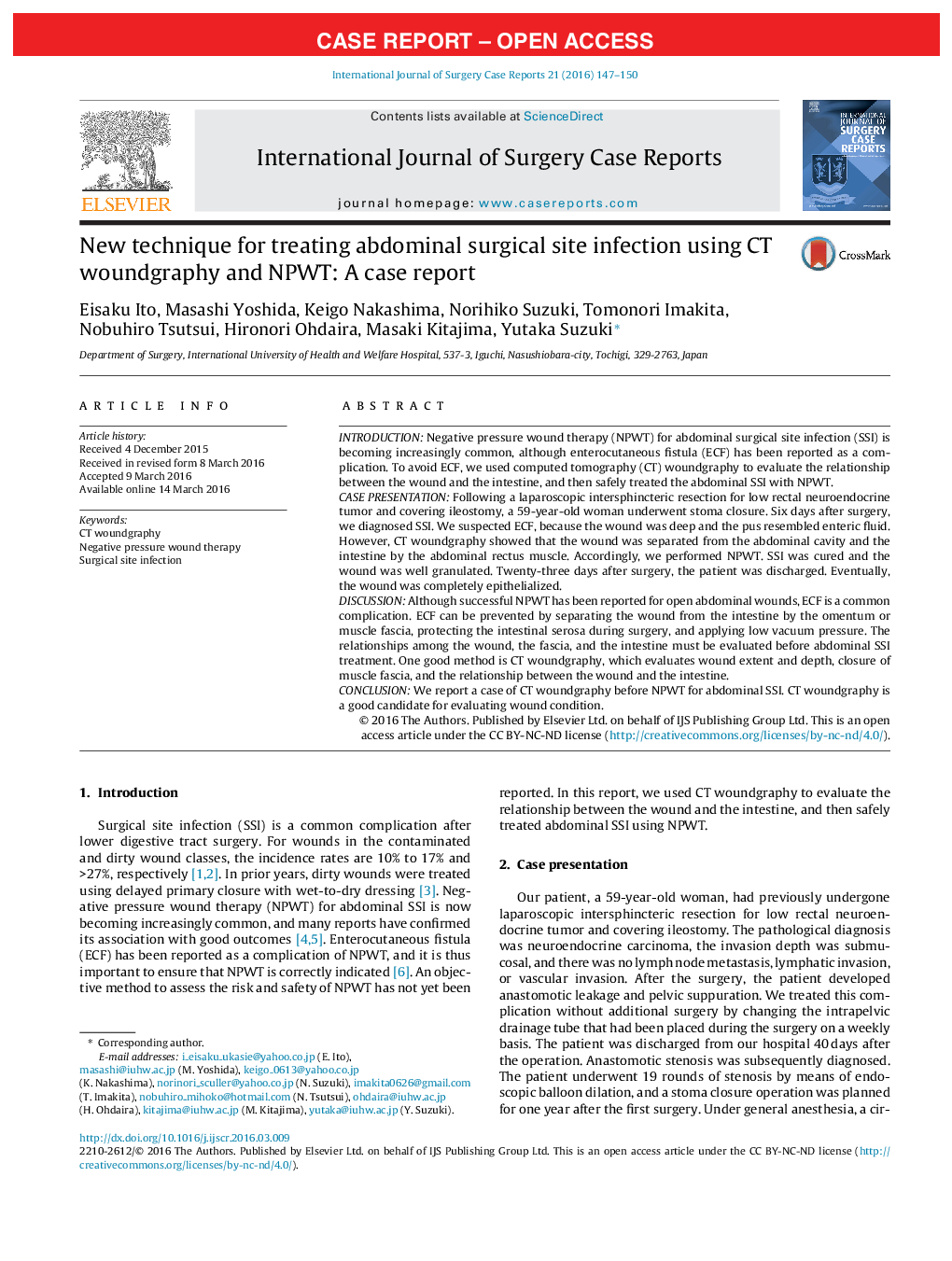| کد مقاله | کد نشریه | سال انتشار | مقاله انگلیسی | نسخه تمام متن |
|---|---|---|---|---|
| 4288384 | 1612093 | 2016 | 4 صفحه PDF | دانلود رایگان |

• Negative pressure wound therapy for abdominal surgical site infection is effective, but we should take steps to avoid enterocutaneous fistula.
• Separation of the wound from the intestine is important in preventing enterocutaneous fistula.
• CT woundgraphy can be used to evaluate the distance by which the wound and intestine are separated.
IntroductionNegative pressure wound therapy (NPWT) for abdominal surgical site infection (SSI) is becoming increasingly common, although enterocutaneous fistula (ECF) has been reported as a complication. To avoid ECF, we used computed tomography (CT) woundgraphy to evaluate the relationship between the wound and the intestine, and then safely treated the abdominal SSI with NPWT.Case presentationFollowing a laparoscopic intersphincteric resection for low rectal neuroendocrine tumor and covering ileostomy, a 59-year-old woman underwent stoma closure. Six days after surgery, we diagnosed SSI. We suspected ECF, because the wound was deep and the pus resembled enteric fluid. However, CT woundgraphy showed that the wound was separated from the abdominal cavity and the intestine by the abdominal rectus muscle. Accordingly, we performed NPWT. SSI was cured and the wound was well granulated. Twenty-three days after surgery, the patient was discharged. Eventually, the wound was completely epithelialized.DiscussionAlthough successful NPWT has been reported for open abdominal wounds, ECF is a common complication. ECF can be prevented by separating the wound from the intestine by the omentum or muscle fascia, protecting the intestinal serosa during surgery, and applying low vacuum pressure. The relationships among the wound, the fascia, and the intestine must be evaluated before abdominal SSI treatment. One good method is CT woundgraphy, which evaluates wound extent and depth, closure of muscle fascia, and the relationship between the wound and the intestine.ConclusionWe report a case of CT woundgraphy before NPWT for abdominal SSI. CT woundgraphy is a good candidate for evaluating wound condition.
Journal: International Journal of Surgery Case Reports - Volume 21, 2016, Pages 147–150